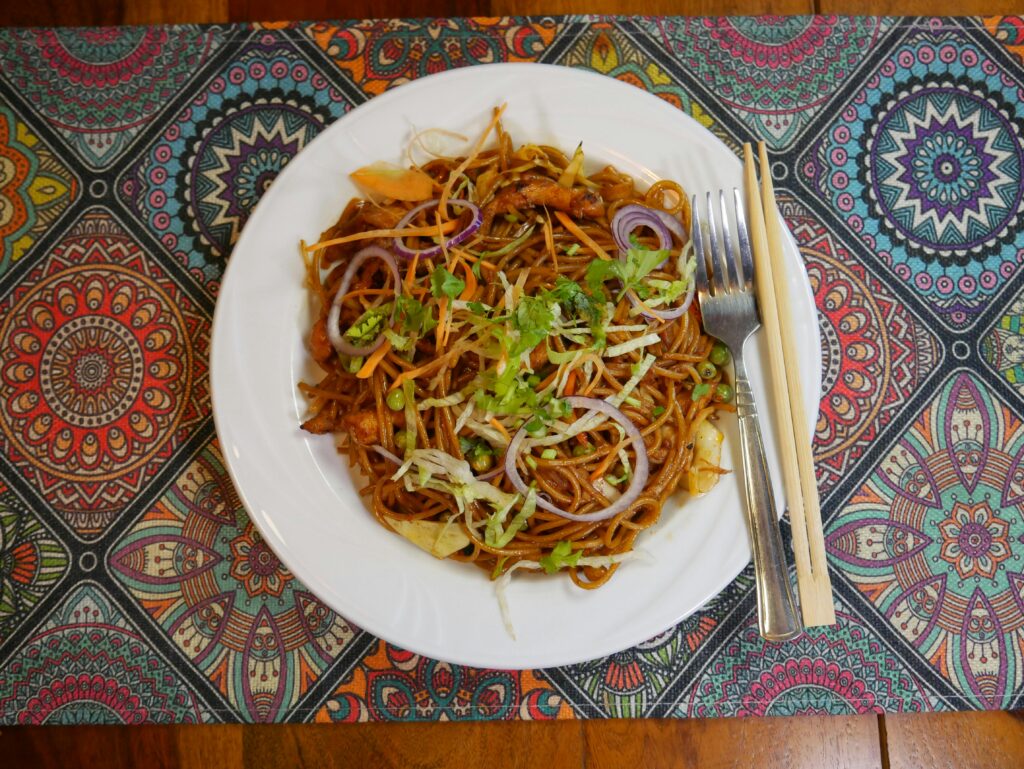When you travel through Europe, it’s easy to notice that familiar foods never taste quite the same from one place to another. Bread, cheese, coffee, or even potatoes—each seems to shift in flavor as you cross a border. Just like how people compare traditions or interests such as cricket online betting, many travelers find themselves comparing meals, wondering why a dish that looks identical can taste so different. The answer lies in a mix of geography, farming, culture, and habits that go back hundreds of years.
Local Ingredients Shape Everything
The main reason food tastes different across Europe is local produce. The soil, water, and air affect the basic ingredients that end up on the plate. Tomatoes from southern Spain or Italy grow in a hotter, drier climate. They hold less water and have a stronger taste. The same type of tomato grown in the Netherlands or Denmark is milder because the growing conditions are cooler and more humid.
Cheese tells a similar story. Milk from cows that graze on grass in the Alps tastes different from milk from cows fed mostly on grain in lowland farms. That small change in diet shifts the flavor of everything made from it—especially butter and cheese. This pattern repeats across Europe. Each region’s food reflects what the land can provide and how people have learned to work with it.
Techniques Travel, But They Change on the Way
Cooking methods often move between countries, but they don’t stay the same. Take bread baking. In France, bakers use high-gluten wheat and prefer long fermentation times. The result is light inside, crisp outside. Move east to Germany or Poland, and the flour mix changes—more rye, less wheat. The bread becomes denser, darker, and slightly sour.
Even frying changes from place to place. In southern Europe, cooks reach for olive oil. In northern regions, they use butter or animal fat. The same potato fried in different fats can taste entirely different. Small changes in heat, oil, and time on the pan create regional variations that seem minor on paper but are clear on the tongue.
Regional Versions of the Same Dish
Some foods have spread so widely that they act as case studies in how Europe changes flavor. Pizza, for example. In Naples, pizza is soft, slightly wet in the middle, and baked quickly at extreme heat. In Rome, the crust is thin and crunchy. Go north to Milan, and the dough thickens into something closer to bread. The ingredients—flour, tomato, cheese—stay the same, yet the result belongs to its region.
Another example is coffee. Italians drink short, strong espresso shots. In France, the same coffee bean becomes a café au lait, lighter and smoother. In Vienna, the local tradition adds milk foam and sometimes a small dessert on the side. Coffee becomes not just a drink but a reflection of local rhythm—quick in Italy, social in France, leisurely in Austria.
Climate and Seasons Matter
Climate determines what grows easily and what doesn’t. In the Mediterranean, the diet leans on vegetables, grains, and olive oil because the land and weather support them. In Scandinavia, the cold limits fresh produce for much of the year, so people rely more on preserved foods—pickled fish, cured meats, and fermented vegetables. Even when two countries share similar dishes, the timing of when ingredients are available changes the flavor.
Water is another factor that most people overlook. It shapes everything from bread to beer. Beer brewed in Prague tastes different from beer in Belgium, not only because of the recipe but because of the mineral balance in local water. Bakers in Paris say the city’s tap water gives baguettes a crust that’s hard to reproduce elsewhere. The chemistry behind this is simple, but the result is noticeable.
Culture and Expectation
Taste is not only physical. It’s social and psychological too. A dish eaten in its original setting carries the rhythm of local life. Eating seafood by the coast in Portugal feels and tastes fresher than having the same dish inland. The food may be identical, but the environment changes perception.
Meal habits matter as well. Southern Europeans tend to eat late and share food across the table. Northern Europeans often eat earlier, with structured courses and fewer shared plates. The way food is served and consumed affects how people taste it. The experience becomes part of the flavor.
One Recipe, Many Interpretations
What these differences show is that no recipe is ever universal. Even when you think you know a dish, it changes when it meets a new place. A traveler might order “soup” or “bread” in different countries and realize that the words are shared, but the meaning is not. Europe’s long history of migration and trade helped spread recipes, but local adaptation never stopped. Each region adds its own layer—different flour, oil, spice, or method.
Conclusion
Foods that taste different depending on where you eat them in Europe reveal how food belongs to place. Soil, water, and weather decide what grows. People decide how to cook and share it. Together, they build a pattern that repeats across the continent: the same dish, endlessly reinterpreted. When travelers notice that something familiar tastes new, they are not imagining it—they are tasting history, geography, and habit in every bite.



